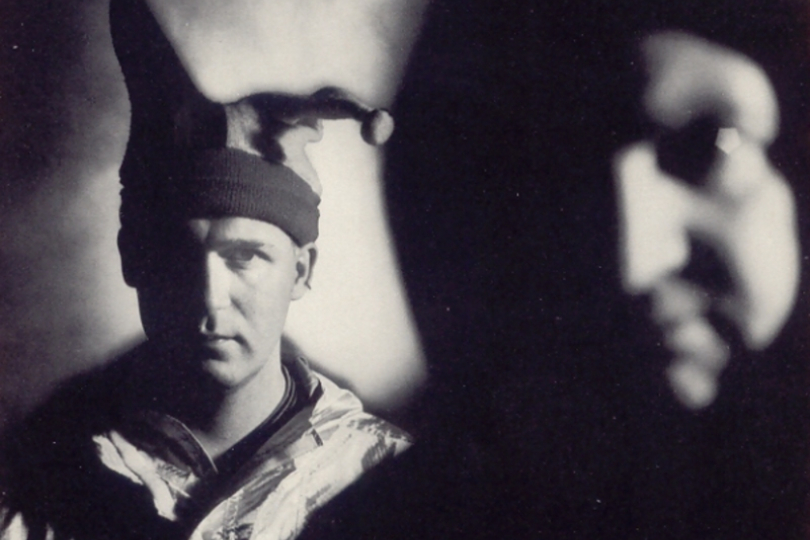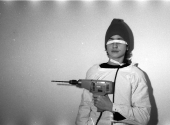
Milestones in Music History #56: Coil, Inspired Darkness
Few artists in the history of music have been able to amaze musically and visually like Sparks, featured in our last episode. Yet, they lacked the darker and more occult side of music, which in some ways has always been a part of the human psyche. In an experimental quest into the universe of evil, a journey in which the best possible guide was a powerful British post-industrial phenomenon. Ladies and gentlemen, today we're talking about Coil.
The situation in England and especially in London at the end of the 70s was in prodigious artistic ferment. There was a great diffusion of underground literature and zines, and this diffusion was supported by the interest in more controversial and transgressive themes. Zines were an outlet for being able to express unrestrained social and political opinions, charging with the imagery contained between the pages of such concepts.
And of course, they were also centred on music, which sometimes acted as a side dish to the topics discussed, and at other times was the sole protagonist of the narrative. And as zines were a showcase and propeller of artistic movements, they became an important disseminator of musical, visual-artistic culture in general.
Among the many zines that existed at the time, all of which were DIY productions and didn't exactly have identifiable underground circulation, one seemed particularly interesting. Stabmental. It was founded by Geoffrey Rushton, who was also a writer and editor of the zine. Geoffrey was still in school when he published it, and he continued the work, reaching seven publications between 1979 and 1982.
He focused his work on the cassette culture which was emerging at the time (he talked about bands such as Cultural Amnesia and The Door and The Window), and about music and bands that were meandering through the underground in those years, devoting interviews, concert reviews and whatnot to acts that became secular such as Clock DVA, Virgin Prunes, Cabaret Voltaire, Alternative TV and Throbbing Gristle.
Geoffrey was a big fan of the latter, and he had managed to track them down by e-mail and even get in touch with their frontman, Genesis P-Orridge. And then there was a concert in 1980, in February, which went down in history because it was recorded and later released as Heathen Earth, where he met another member of the band, Peter Christopherson.
And between Geoffrey – who would shortly thereafter change his name to John Balance – and Peter, sparks flew. Lightning struck between the two and they moved in together in London. Meanwhile, the Throbbing Gristle adventure was coming to an end, and some of its members (Genesis, Peter and Alex Fergusson, who were coming from Alternative TV) reunited to find a seminal and mind-blowing project.
Psychic TV was thus formed (which you can find in an earlier episode of ours here), in which Balance had also participated (he had contributed to the making of the 1982 single "Just Drifting", from the album Force the Hand of Chance, and worked on the album that came out the following year, Dreams Less Sweet). However, Balance had at the time participated in Welsh artist Brian Williams' Lustmord project, and in 1982 he decided to start his own musical act, called Coil.
The following year Balance created the poster The Price of Existence Is Eternal Warfare, clearly inspired by the book of the famous esoteric occultist Aleister Crowley, The Book of Lies. Shortly after that, he involved Christopherson in the project, and in August 1983 they had their first concert. Others followed in the same year with the participation of a third member, John Gosling, also a member of Psychic TV and founder of a musical act of his own, Zos Kia, as it was difficult for Christopherson to always be present considering his obligations to his original group.
In any case, Balance was also still part of Psychic TV, and therefore in January 1984, the two left the group to dedicate themselves entirely to their new project. In the same year their first work was released, the EP How to Destroy Angels, released on Good Friday with the Belgian label L.A.Y.L.A.H. The work was dedicated to the god Mars and represents an ideal initiation into their universe, studded with metallic sounds, experiments and magical/occult visions.
A couple of months later their first full studio work was released, Scatology, which represented a development of How to Destroy Angels, focusing on the themes of alchemy and the principles of transformation of matter, and in which other musicians participated such as, apart from their former colleague Alex Fergusson, Stephen Thrower and the irreverent Gavin Friday of the Virgin Prunes; they also availed themselves of the collaboration of the musician and producer James George Thirlwell, also known as Foetus.
Scatology generated interesting creative ideas, which the band developed and refined with their second work, Horse Rotorvator. This work is also a bit cryptic, taking its title from a dream of Balance in which the four horsemen of the apocalypse cut the throats of their horses and dismantled their jaws, creating with them a device capable to "plough up the waiting world". A record that mixed psychedelia, tribal rhythms, experimentation and mystical visions.
Their third album couldn't hold a candle to Horse Rotorvator. Gold Is the Metal (With the Broadest Shoulders) included mostly demos, outtakes and previously unreleased versions of the previous two albums and the Hellraiser soundtrack. Their consecration came with the publication of their fourth work, a true masterpiece of musical beauty and refinement.
In fact, in 1991 Love's Secret Domain was released, which marked a turning point in post-industrial music, also giving inspiration to acid house and psychedelic music. This was the album that gave them enough importance to place them among the milestones of music. Their career subsequently continued partly with solo projects, partly by fleshing out the material they had available, and their last work came out in 2008, a record entitled The New Backwards.
Coil was able to combine an infinite number of different genres and subgenres, with a new and innovative approach, which Balance himself described as "magickal music". They combined noise with ambient, avant-garde with ethnic music. They did this thanks to their versatility and the use of various devices (the Mellotron and the Optigan, but also the Moog and the marimba) and employing experimental techniques such as meditation, sleep deprivation, induced lucid dreaming, ritual drug use, and elements of chaos theory and SETI synchronisation and technical glitches.
It goes without saying that their brilliance and transcendence of all musical and spiritual barriers created a timeless legacy that, even after Balance died in 2004 (and Christopherson’s death in 2010), is not destined to end. Their sound, their experimental ability, and their boldness in tackling religious, spiritual, and occult themes created a huge following and were a huge influence on many artists – among many Chris Connelly, Alec Empire, the Japanese multi-instrumental artist Kazuyuki Kishino (known as KK Null).
Furthermore, Trent Reznor of Nine Inch Nails even went so far as to use some remixes provided by Coil and in 2010 founded the band How to Destroy Angels, after their debut album which received the blessing of Christopherson, with whom Reznor was in contact. Coil was an incredibly amazing band, who changed the rules of industrial. And so did the noisy and super experimental industrial act from Germany, Einstürzende Neubauten, protagonists of our next episode of Milestones.
How important is religion and spiritualism in music? Can sound be a vehicle for magic? How much mystical and occult is there in musical experimentation? And is occultism linked only to certain genres and musical worlds? And how has religious thought evolved in today's music?
Leave your opinion in the comments below!
If you have found an error or typo in the article, please let us know by e-mail info@insounder.org.





